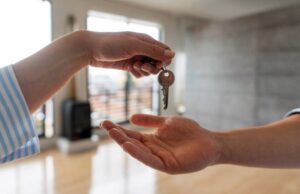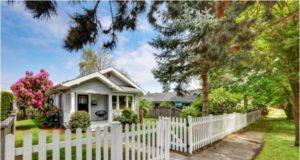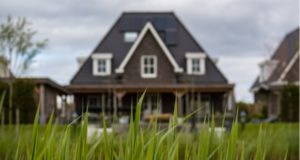Closing down your cabin for the season is truthfully never as exciting as opening it up, but it’s an important process that helps protect your property during periods of extended non-use.

Most owners guard against common incidentals like water leaks, potential fire hazards and temperature changes when shutting down for the season, but animal and human intrusions are another safety risk to be considered.
Here are a few ways you can create a seasonal home security regimen and keep unwanted encounters to a minimum.
Go for a Lived-In Look
Most burglars in remote areas are looking for shelter or to take off with your valuables — two things that are going to be harder to come by if they think someone is actually taking up regular residence at your place. The idea then is even if you’re not there, make it appear that you are.
Here are some tips to give your place the “we’re home” look:
Every time you visit, don’t leave without changing something, like installing a new mailbox or swapping where you last left your yard tools. That way if a potential criminal is possibly scoping out your place, they can see there’s been recent activity and will stay away.
Another simple idea is to ask (or pay) someone who lives in your area year-round to make some tracks around your cabin when it snows; again making it look like someone is home even if you are miles away.
Remember, anything you can do to make it seem like you reside at your seasonal home year-round is worth trying to ward off break-in attempts. Most home invasions happen because the criminals believe no one is there to stop them or catch them in the act. They want an easy target, so don’t give them one.
Smile! You’re On Camera
Some criminals aren’t deterred by common sense or the idea of a risky break-in. So, take your protection to the next level by investing in a high-quality security camera system.
Security cameras are proven deterrents for criminals and lessen the likelihood of a break-in by 60 percent. Here’s what to look for if you’re serious about thwarting any intrusion:
- Maximum night vision range (150-250 ft)
- Built tough on the outside with metal housing & IP67 weather ratings
- Built-in audio recording capabilities
- 4K video monitoring
Keep in mind, if you’re wanting to monitor just one home or cabin, you can stick to a higher resolution and lessen the frames per second (fps) speed to ensure captured images are more smooth and less grainy. This type of viewing allows you to capture critical moments, like when a burglary suspect looks up at your cameras. Distinguishable evidence like this gives authorities the details they need to get to work if a crime is committed on your property.
Safeguard Entry Points
Make sure that any entrance points into your home are secured beyond the average lock and deadbolt. For doors, reinforcing the less-than-sturdy door frame with a door plate can help secure locks into the actual framework of your cabin. That way it takes more than a heavy object or swift kick to break down your entry door.
As for windows, try an inexpensive but effective window lock, which can be purchased online or at a hardware retailer. Most criminals won’t try to crawl through shattered glass as its especially risky, but if you’re worried about a broken window break-in, adding security film to your panes can be a good way to go.
If a determined criminal decides to choose your well-guarded home as their next break-in spot, you can at least make it harder for them to gain entry. Giving the authorities added time to spoil the burglary attempt or at least catch more usable evidence on your high-powered security cameras to make sure they don’t get away with it.









